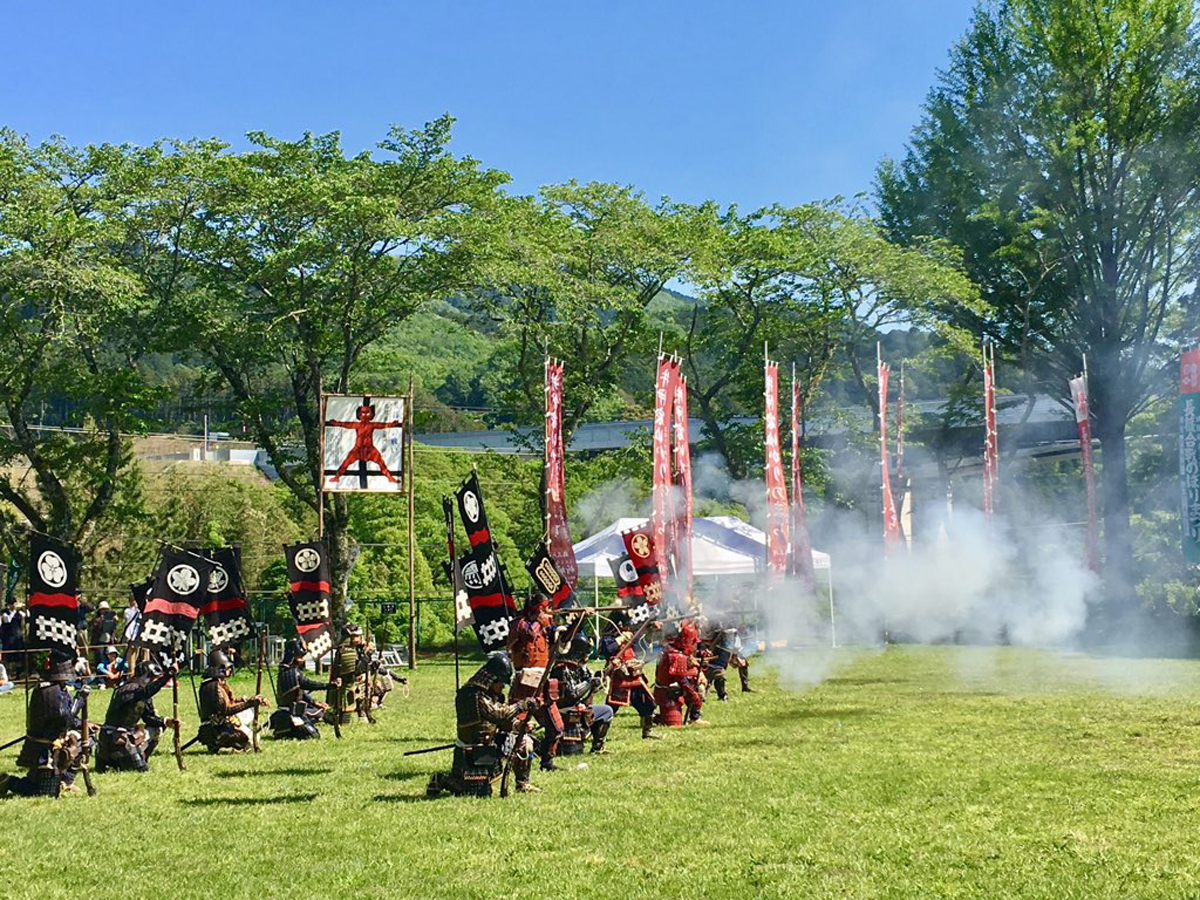The Great Samurai Gun Battle of Nagashino Shitaragahara
Aichi Prefecture Okumikawa region’s Nagashino Castle, Damine Castle and the Samurai Battle of Nagashino Shitaragahara
Torii Suneemon had been captured, stripped and tied spreadeagled to a double beamed wooden crucifix and hoisted up above the cliffs overlooking Nagashino Castle on the other side of a raging river. His captors were the samurai serving the warlord, Takeda Katsuyori. According to the story, one of the Takeda captains approached the 36-year-old Torii and told him roughly; “Call out to your friends, tell them that help is not coming and that their lives will be spared if they surrender immediately.” Torii nodded weakly. Looking across the river, he could see the nervous samurai inside the besieged fortress looking his way. Taking a deep breath he shouted, “Men of Nagashino Castle,…” he paused, “Lord Tokugawa Ieyasu is coming, Don’t give up!,” he yelled urgently before being forever silenced by a spear thrust to the chest.
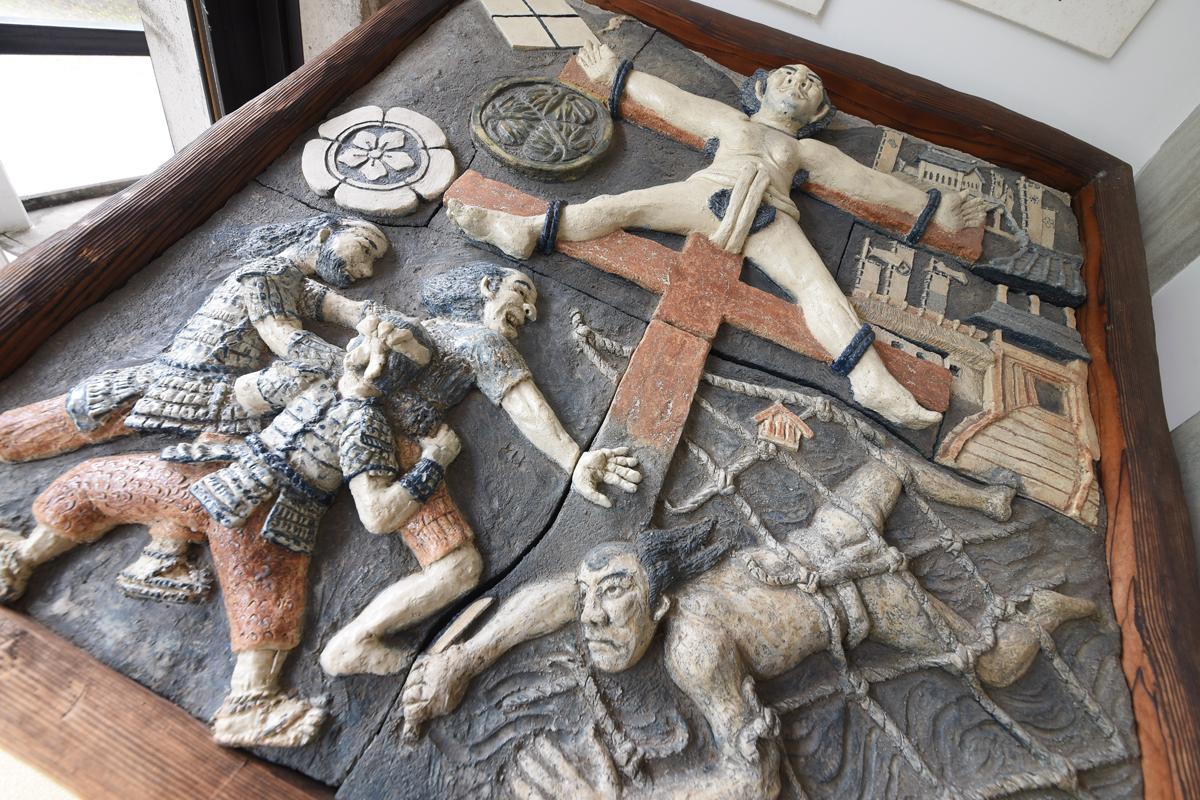
▲Photo:The Hero of Nagashino, Torii Suneemon being crucified in front of Nagashino Castle.
The Takeda forces were a much feared, battle hardened and well trained samurai battalion. Takeda Katsuyori was the son of the late Takeda Shingen, a brilliant tactician and general who had been shot while attacking nearby Noda Castle almost two years earlier. Shingen had made numerous attempts on capturing the Tokugawa family lands of Mikawa, modern-day eastern Aichi Prefecture, and now his son was trying to prove his worth and succeed where his father had failed. The Takeda had soundly defeated the Tokugawa at the Battle of Mikatagahara some years before, and Katsuyori had later succeeded in capturing the strategically important Takatenjin Castle from the Tokugawa, something his brilliant father had failed to achieve, and so he was no doubt confident of another victory.
Two weeks earlier, at the beginning of May, 1575, the Tokugawa held Nagashino Castle, manned by just 500 samurai, had been attacked and surrounded by 15,000 troops under the command of Takeda Katsuyori.
Located in the Shinshiro region of Aichi Prefecture, Nagashino Castle was strategically positioned to the north of the Tokugawa clan’s main castle at Okazaki, and as such posed a threat to the Takeda supply routes as they forged ahead, deeper into the Tokugawa held lands of Mikawa. For this reason, Nagashino had to be crushed before the Takeda could make an attempt on Mikawa.
Nagashino Castle
Nagashino Castle was built in 1508 atop sheer cliffs on the fork of two rivers forming a natural moat. Because of this, it proved to be a difficult castle to attack, and relatively easy to defend. It was a comparatively small, but vitally strategic flatland castle.
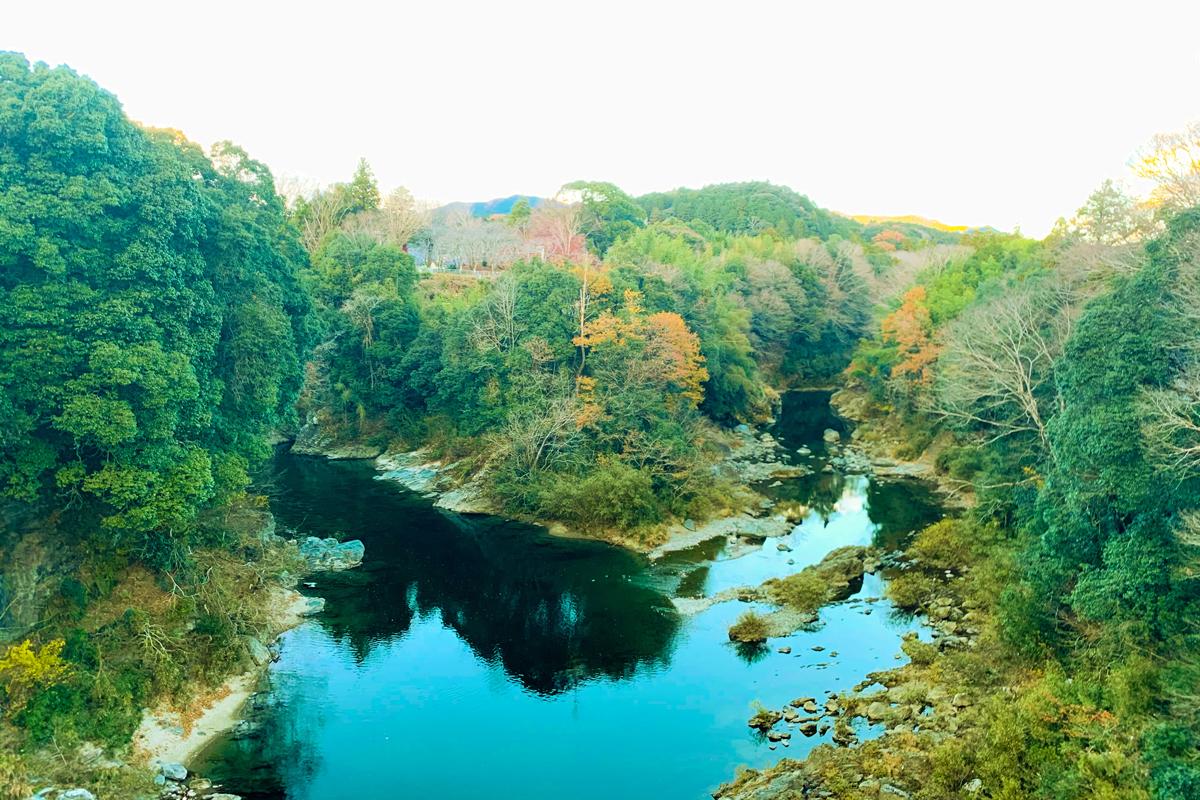
▲Photo:The site of Nagashino Castle, defended by 500 Tokugawa allied troops, and laid siege to by 15,000 Takeda samurai.
The 500 defenders of Nagashino were quickly completely surrounded and cut off, held under siege for around two weeks until the ashigaru foot soldier named Torii Suneemon volunteered to get help. At night he swam the cold river moat, and slipped undetected through the units of Takeda guards surrounding the castle before running over 35 kilometers across mountainous territory to Okazaki Castle, where the regional lord, Tokugawa Ieyasu was based. Having explained the situation, and requesting reinforcements, Lord Ieyasu gave the man his word that assistance would soon be forthcoming, and so Torii ran back to Nagashino Castle to let his comrades know the good news, only to be caught by the Takeda besiegers while trying to re-enter the fortress. Torii’s brave sacrifice encouraged the men inside to hold out for another three days until Tokugawa Ieyasu and his ally, Oda Nobunaga could send a joint army of 38,000 to tackle the Takeda.
Battle of Nagashino Shitaragahara
Along with their regular weapons and armor, each of the Oda samurai carried with them a long, thin log. Three thousand of them also carried matchlock guns. The gun had only been introduced to Japan some thirty years previously by Portuguese traders, and the firearm had quickly been readily embraced by the samurai, but never on such a scale as now.
The wooden posts the Oda men carried were used to build some two kilometers of simple palisade along the western side of the Shitaragahara valley at the foot of the rolling hills, not far from Nagashino Castle. Behind this log fence, the joint Tokugawa and Oda forces waited and watched. On the opposite eastern side, the Takeda had arranged themselves into battle formations on the slopes of the low mountains. Between the Tokugawa / Oda troops and the Takeda army, running right through the middle of the narrow valley was the small creek-like Rengo River, surrounded on both sides by muddy rice paddies.
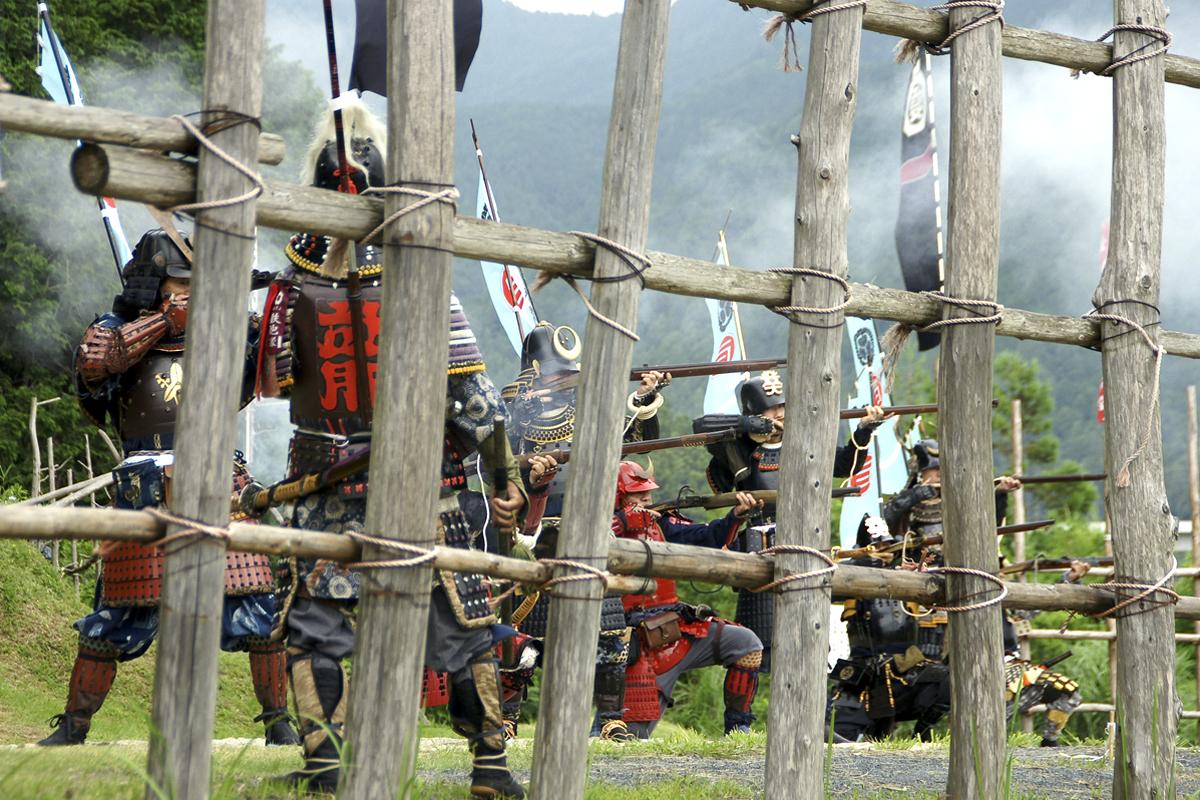
▲Photo:The reconstructed palisades at Nagashino Shitarahara Battlefield.
On the morning of May 21, 1575, the Takeda forces front line samurai were given the order to attack. Raising a great war cry, they entered the narrow battlefield, they first encountered the soft muddy rice paddies, which caused a slowdown, they then had to ford the shallow Rengo River, and tackle more rice paddies before reaching the log barricades. Hardly any of them got that far. The Oda forces’ matchlock gunners opened fire as they approached, felling them immediately in a great blast of gunfire!
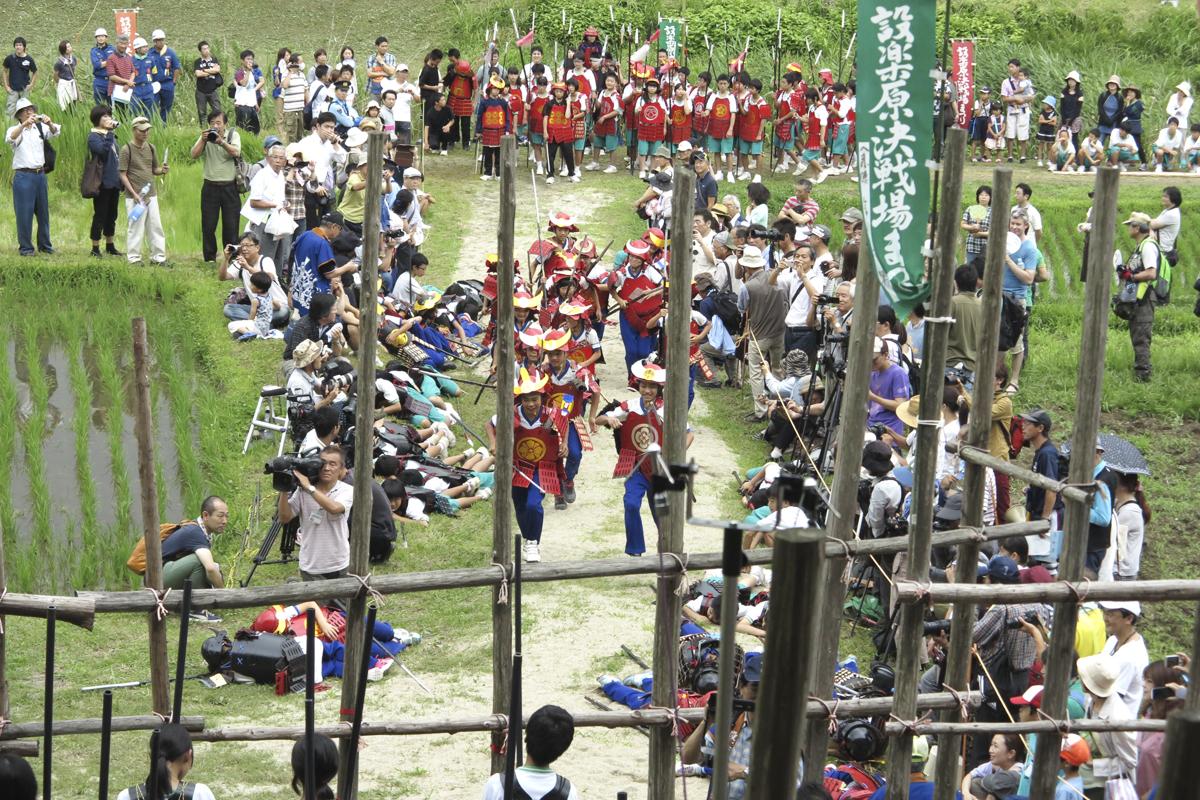
▲Photo:Re-enactors take to the actual site of the battle for the annual Shitaragahara Battlefield Festival, staged every June.
Katsuyori was well aware that the guns took at least 30 seconds under ideal conditions to prime and reload, and that battle conditions were far from ideal. After the first volley, and before the smoke could clear, he quickly sent a second wave of samurai to attack.
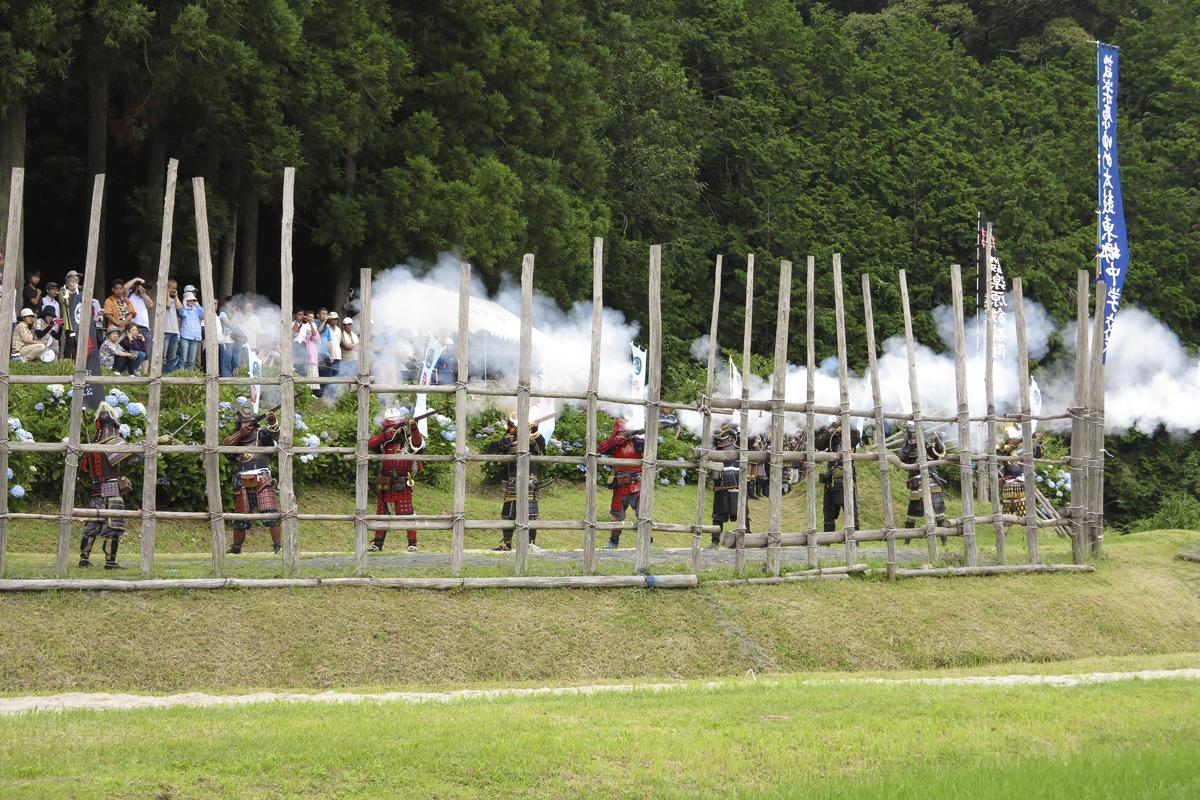
▲Photo:Members of the Nagashino teppotai, the antique matchlock gunnery team in samurai armor and with real matchlock guns in hand, recreate the battle. Loaded only with gunpowder, the guns create a loud bang, a shower of sparks and clouds of thick smoke for some exciting entertainment and great photo opportunities.
Within seconds they too were felled by more matchlock fire. Katsuyori, shocked, sent yet another line of troops, who were promptly mown down before they could cross the narrow river. Wave after wave of Takeda samurai were sent at the barricades, only to be shot down in a repeated volley of fire.
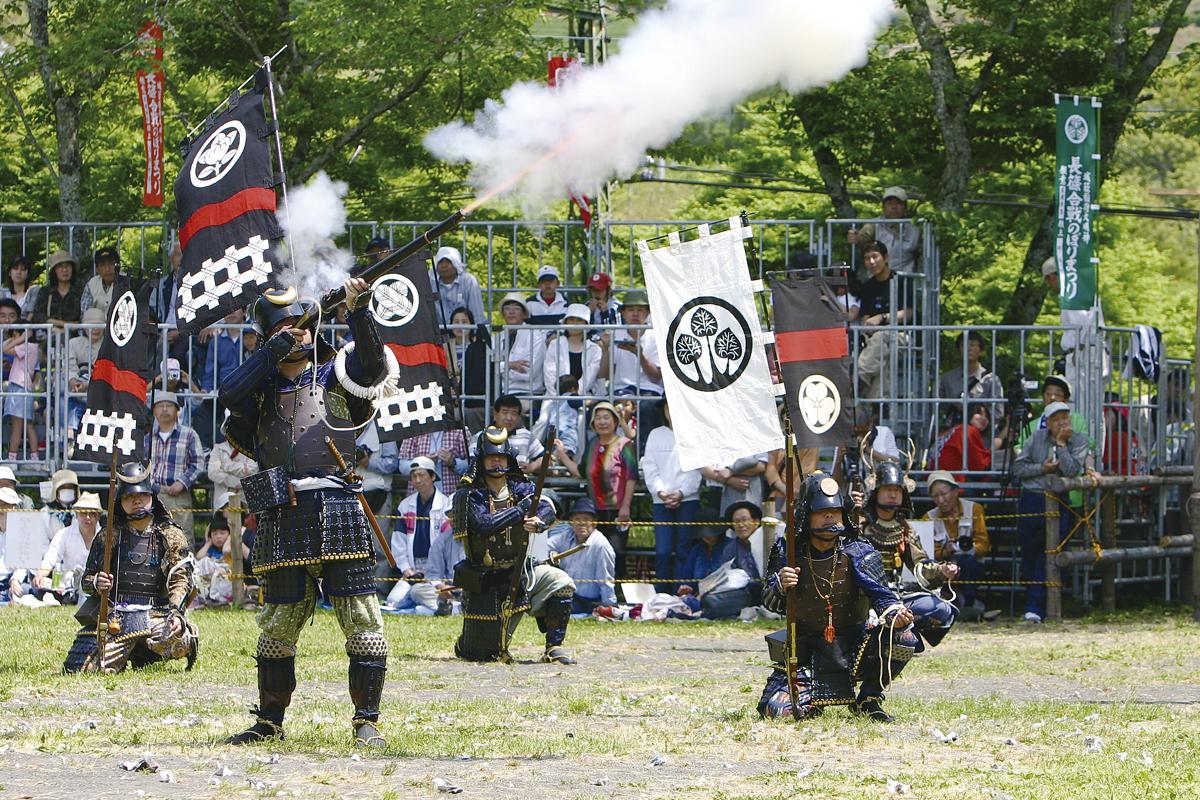
▲Photo:Every May, re-enactors recreate the scenes of the Battle of Nagashino Shitaragahara within the main bailey of Nagashino Castle, complete with matchlock gun firing demonstrations in the Battle of Nagashino Nobori (War Flag) Festival
Nobunaga had realized the single-shot matchlock gun’s shortcoming. To counter this, the story goes that he had organized his gunners into lines of three along the barricades. After the first guns were fired, the second line moved into position, took aim and shot. Once their breaches had been emptied, the third line took turn at shooting small lead balls into the advancing enemy. By then, the first line had reloaded and were ready to continue shooting, and so on in a machine-gun like fashion.
The battle was a violent eight-hour bloodbath, leaving 10,000 Takeda and 6,000 allied Oda / Tokugawa troops dead across the valley. The Takeda had been defeated. Oda Nobunaga’s reputation and power had been greatly elevated, and Japan’s history was about to head in a new direction.
The Snakes Within Damine Castle, The Snake Head Castle
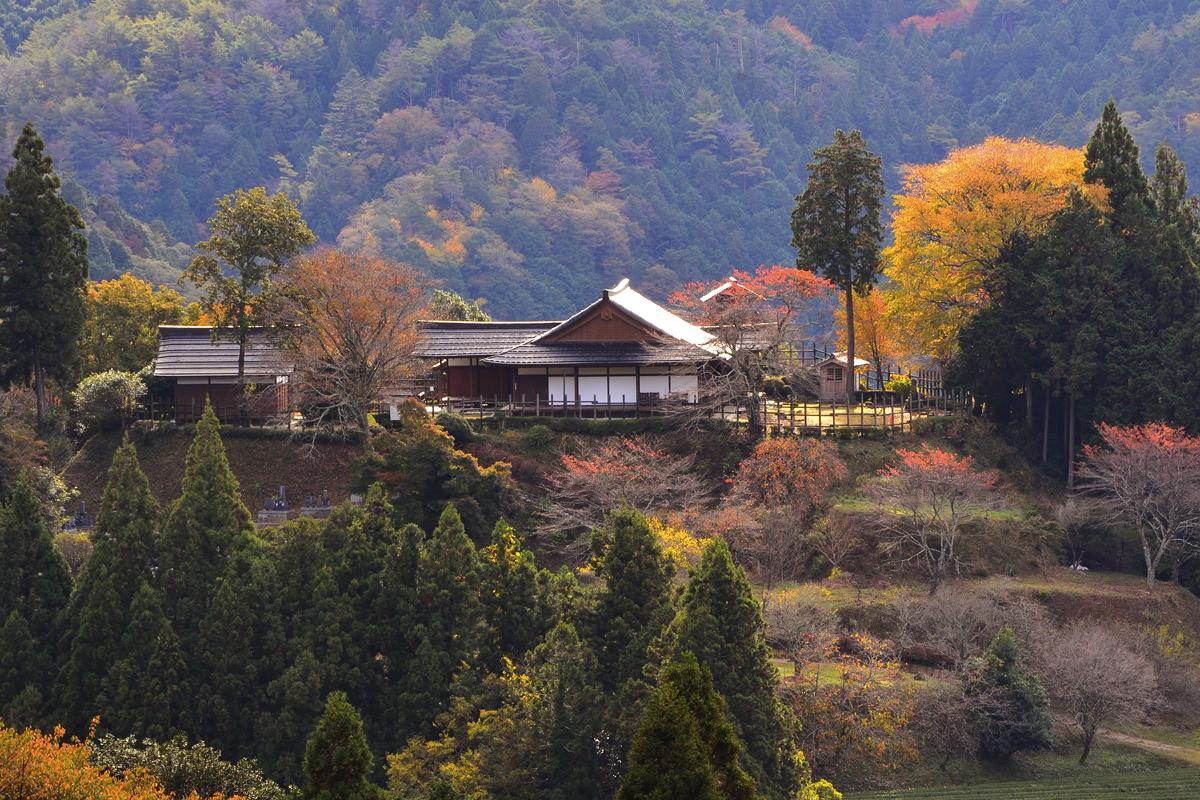
Realizing his defeat, Takeda Katsuyori and his vassal Sugunuma Sadatada quickly fled the scene, intending to return to the safety of Suganuma’s Damine or Snake Head Castle, however, upon their arrival, they discovered that Damine’s caretaker, Sadatada’s uncle, Suganuma Sadanao had defected to the Oda clan, and shut the gates on Sadatada and Katsuyori. They were then forced to escape to the Suganuma clan’s Busetsu Castle, about 20km away.
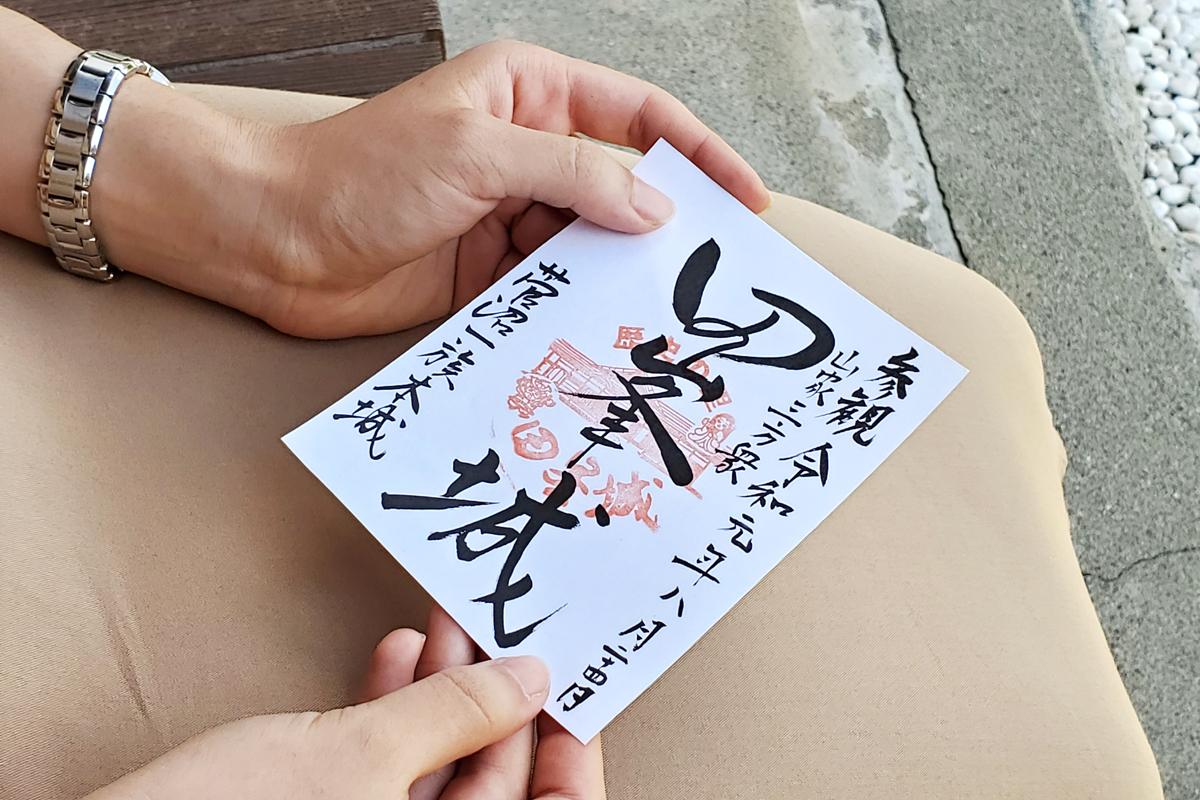
▲Photo:Damine Castle’s popular Gojoin collectable signed charms.
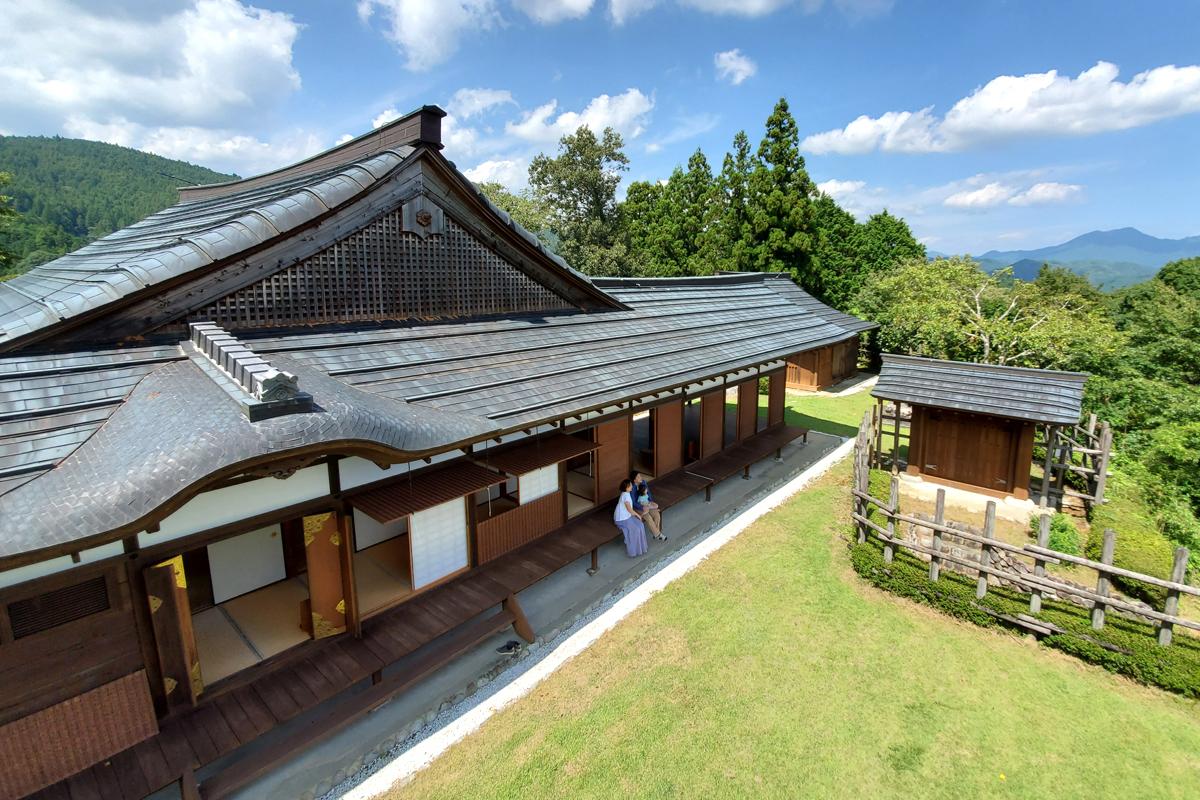
▲Photo:Reconstructed Damine Castle played a role in the Battle of Nagashino. Its master, Suganuma Sadatada and his samurai fought alongside Takeda Katsuyori, and it was to here they attempted to escape following the battle, only to be turned away.
In revenge for this act of treason, Sadatada later faked his own death, which led to the relaxing of security at Damine Castle. Then, early one morning, Sadatada and an army of loyal followers attacked Damine, capturing the fortress along with his uncle, Sadanao, who was executed along with 100 other traitors. Less than six years later, the Takeda clan were ruined. Fearing the growing strength of the Tokugawa, Sadatada left Damine Castle, which was soon claimed by the Tokugawa.
Although Damine was later abandoned, the castle ruins remained in relatively untouched condition, allowing for the research and reconstruction of a number of features, including the lord’s kyokan living quarters, the watchtower, gates and fencing to provide a modern day view of a Sengoku Period castle.
Nagashino, Damine and the Battlefield Today
Nagashino Castle was abandoned the following year in 1576, replaced by the nearby Shinshiro Castle. In 2006, the Japan Castle foundation listed the Nagashino Castle ruins among its list of the nation’s Top 100 Castle sites.
Besides the natural rivers and cliffs that protected the castle from being overrun by Takeda troops, the remains of the castle’s dry moats, defensive earthen embankments, baileys and gates can still be seen, along with the small but very well stocked and displayed Nagashino Castle museum. Around the area visitors can visit the sites of the Takeda force’s fortresses and command post encampments, and also the site of Torii Suneemon’s crucifixion.
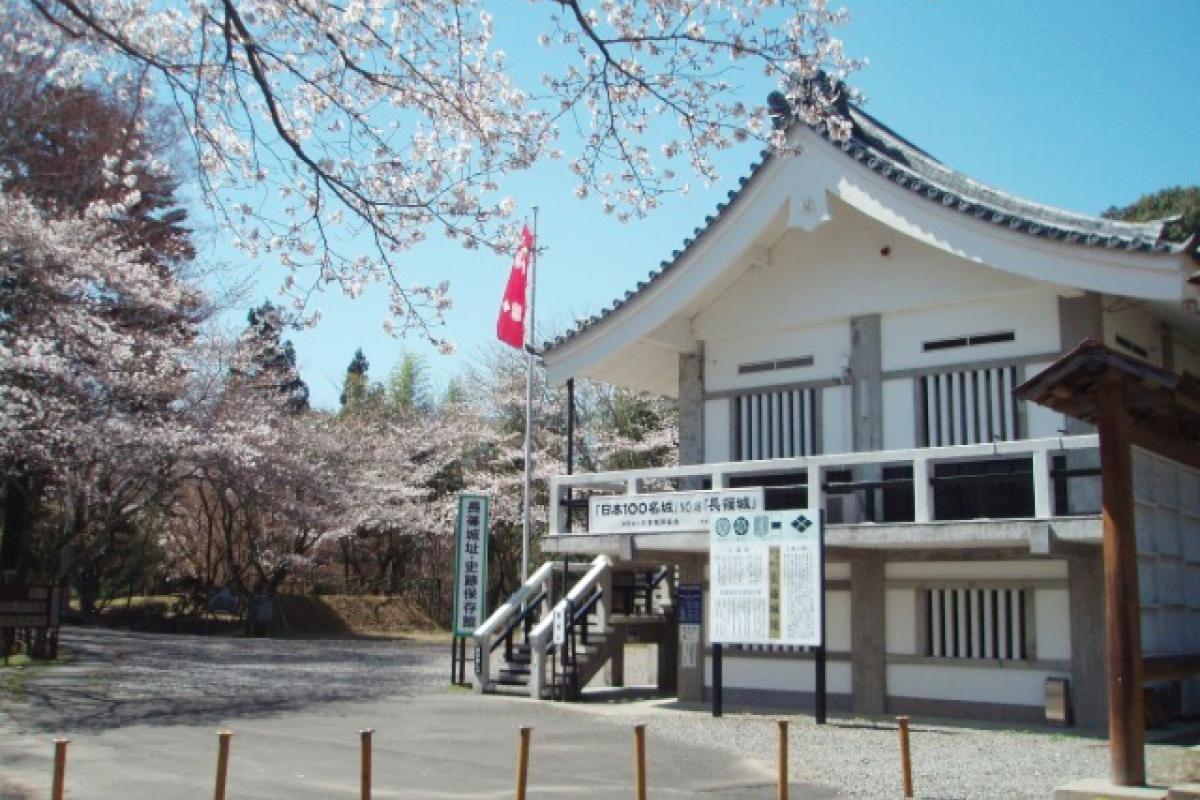
▲Photo:Nagashino Castle Ruins Museum located beside the ruins of Nagashino Castle is a small but fascinating museum dedicated to the siege and battle.
The nearby Nagashino Shitaragahara Battlefield is among one of the better preserved of Japan’s many major battle sites. A few hundred meters of the wooden fencing has been authentically recreated by the local Shinshiro City government providing a fine idea of what the battlefield would have looked like around 450 years ago. From the palisade you can look out over the rice paddies and Rengo River to where the Takeda launched their attack.
Make sure to schedule enough time to visit the various generals’ war camps on both Oda / Tokugawa and Takeda sides to get a true picture of the battlefield. Maps with the details of these historical sites and memorial stones are available, however most information is currently in Japanese only.
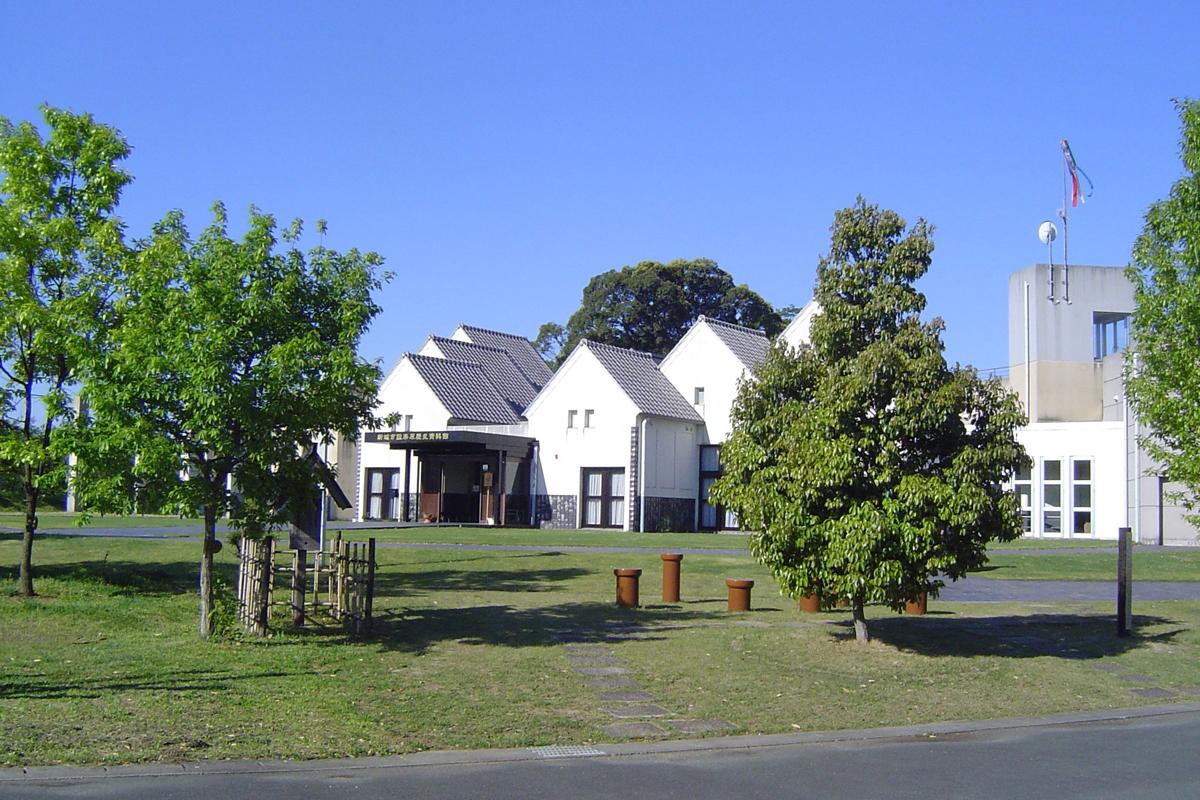
The nearby Shitaragahara Historical Museum on the eastern side of the valley contains a most impressive range of items and documents related to the battle. It features a large selection of over 50 matchlock guns, ranging from 3.32 meters in length to the shortest about 40 centimeters long. Old maps, scrolls, paintings, video presentations and various displays round out this most rewarding experience. Some fine examples of samurai armor, helmets, weapons and folding battle screens also fill the many glass cases. Take the elevator to the roof top lookout for a view of the reconstructed palisade on the opposite side of the valley. There isn’t a great deal of information in English, but the displays are relatively easy to understand and are very much worth seeing.
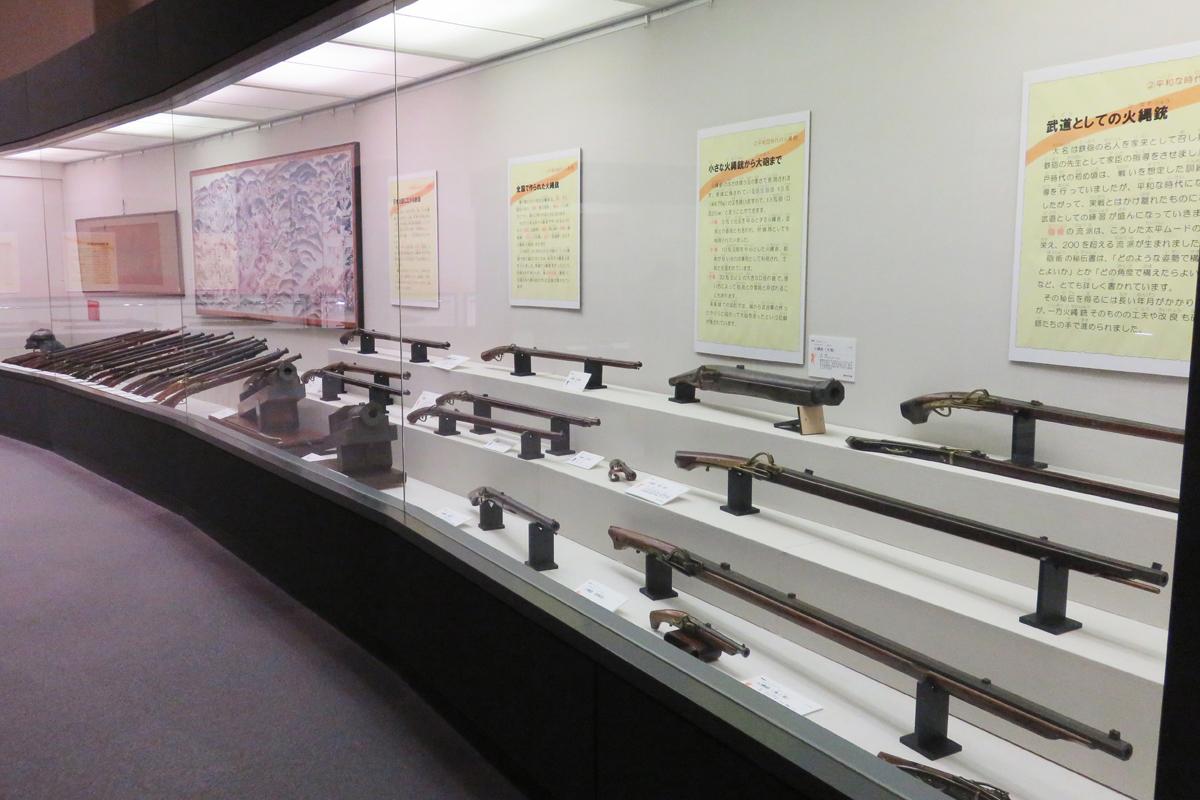
▲Photo:The well-presented Shitaragahara History Museum is a must see.
Every May, members of the Nagashino teppotai, the antique matchlock gunnery team don their samurai armor and with matchlock guns in hand, recreate the battle. The guns, all real, are loaded only with gunpowder, but a loud bang, a shower of sparks and clouds of thick smoke provides for some exciting entertainment and great photo opportunities.
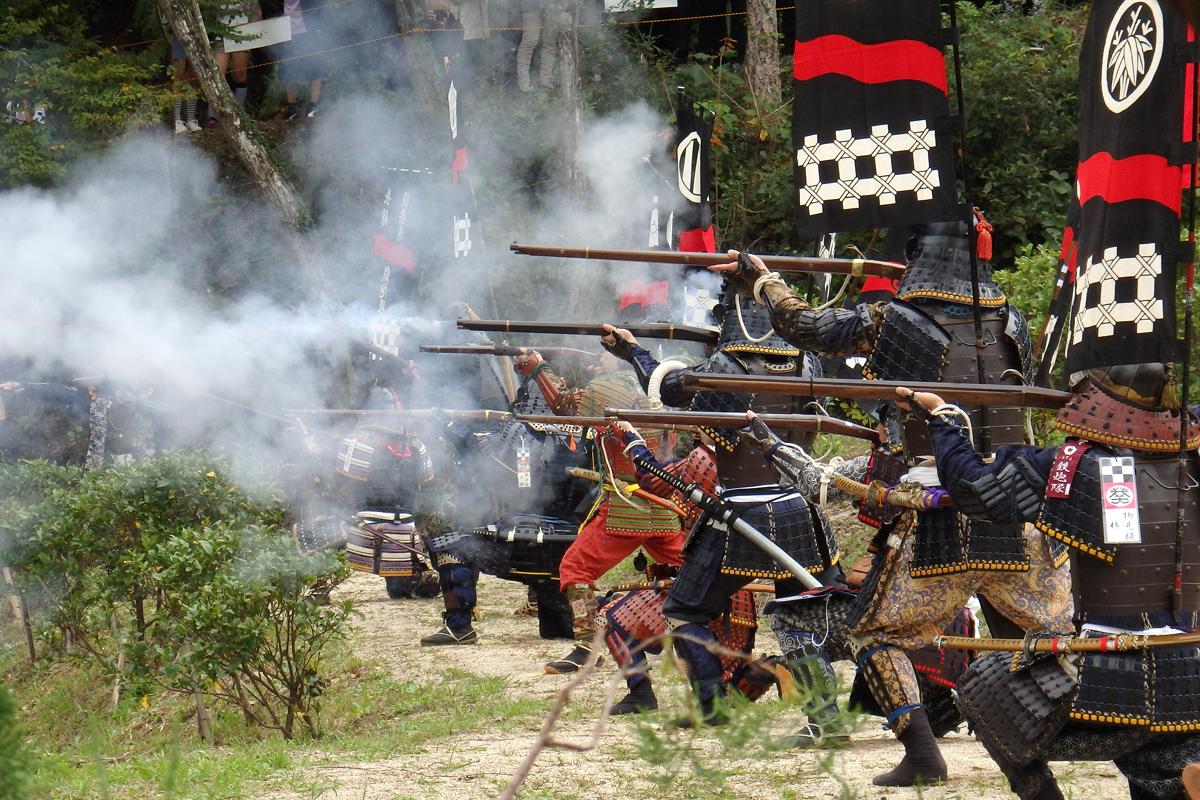
The well maintained battlefield and museum are a must see for fans of Japanese history, samurai and students of militaria. Include the nearby Nagashino Castle and their small but excellent museum, and a visit to the authentically recreated Damine Castle too for a true Battle of Nagashino experience.


